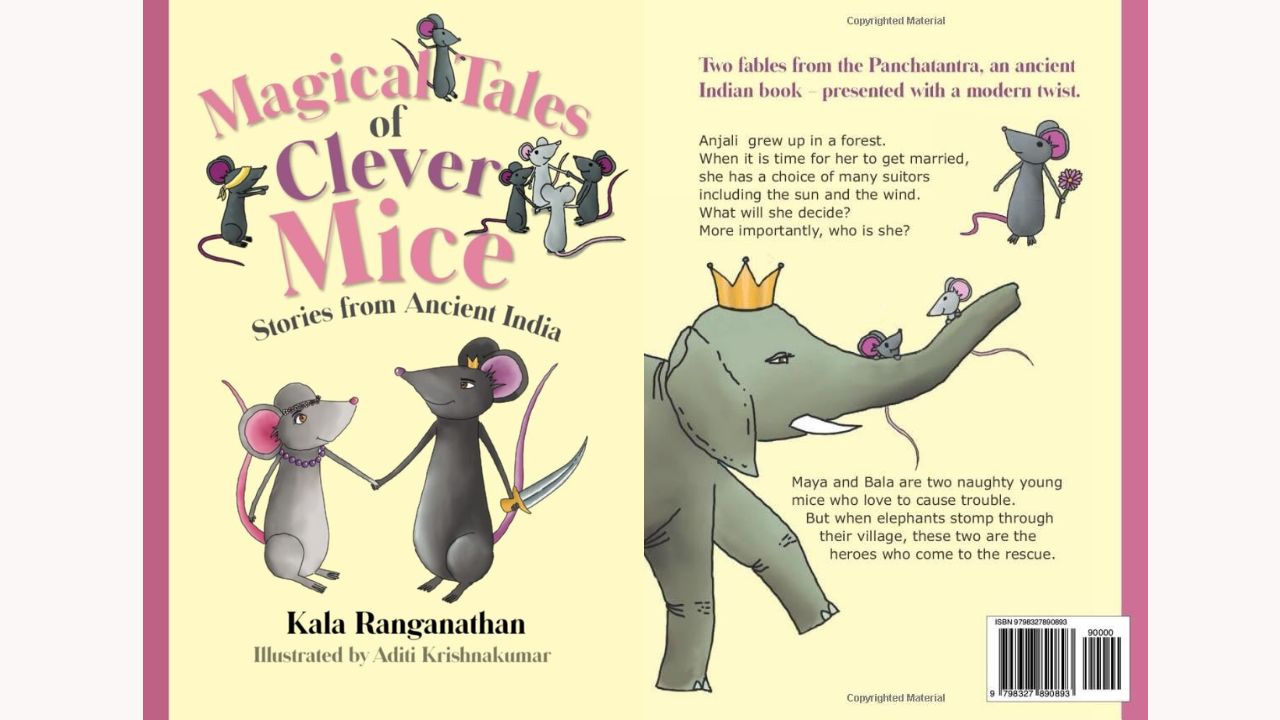- My friends in India were quite surprised when I chose to publish a children’s book titled Magical Tales of Clever Mice while residing in California. They remarked that with so many books in India inspired by the Panchatantra, there seemed to be no need for another. However, I struggled to find suitable books for my biracial grandchild, who adores Indian stories but is unlikely to visit India. Unfortunately, the recent selection of books available does not adequately cater to the Indian diaspora’s needs.
In the past, my children had access to only Amar Chitra Katha books to learn about Indian mythology while growing up in New York. There were several challenges, including complex vocabulary, awkward language, and overtly violent scenes. Additionally, there was a troubling theme of colorism, portraying dark-skinned characters as villains and fair-skinned ones as heroes. Many contemporary books from India are just as difficult for children raised here to comprehend.
Out of sheer frustration and determination, I resolved to create a book that would engage my grandchild. It needed to include stories from the Panchatantra, as animals—especially adorable mice—naturally captivate children.
- In Magical Tales of Clever Mice, two stories are presented in a modern, vibrant, and entertaining manner using simple language. However, much is intentionally left out: violence, unfamiliar Sanskrit terms like ashram, and cultural nuances. The whimsical and light-hearted illustrations delightfully disregard historical and geographical accuracy.
The emphasis is on strong male and female role models, with the aim of appealing to all children, regardless of their backgrounds.
The first tale centers around a mouse transformed into a girl by a holy man, named Anjali. Growing up in an ashram, she joyfully plays hopscotch with mischievous bunnies and dances alongside peacocks. As Anjali matures, she turns down many powerful suitors, including the sun and the wind, ultimately choosing a mouse as her partner. Anjali embodies a feminist role model, confidently defining her own journey while exploring her identity.
The second story is a beloved tale of elephants aiding mice and vice versa. In this retelling, the focus is on two young siblings, Maya and Bala—a girl and a boy. The mischievous animals frequently disrupt the tranquility, landing themselves in trouble with their father. Yet, when elephants come charging in, they rescue the village. Young readers will easily connect with these brave protagonists.
When I see my grandchild delighting in this book and sharing it with friends from various backgrounds, it fills me with happiness.
Aditi Krishnakumar, who illustrated the book, recently relocated from Singapore to her new home in Hyderabad, India. She shares her insights.
Aditi: As I embarked on this project, I didn’t anticipate the intense effort required to separate it from my childhood experiences with Amar Chitra Katha and old Telugu films while still preserving the essence of the stories. I was unaware of how deeply ingrained the imagery was until I noticed it subtly influencing the artwork: from the rishi’s topknot to the curve of a sword.
The combination of retained and omitted imagery reflects our mission to present Panchatantra stories to a new generation of children who may have connections to India but have not been raised there.
Thus, Anjali is depicted wearing a skirt and blouse that could easily belong to a girl of any culture, had she never been exposed to mainstream fashion. The ashram backdrop features palm trees and conifers, a whimsical blend that could only exist through the magic of a sorcerer turning a mouse into a human.
“The Mouse Girl” was one of my favorite Panchatantra stories as a child, and I later realized that its appeal stemmed from a fundamental message: no one, not even the most powerful sages, can force anyone—be it a person or a mouse—to become someone they are not.
“The Mice and the Elephants” showcases a timeless story of friendship and compassion. My favorite illustration in the book depicts the mice frolicking among the ruins of a human village. Creating it inspired a glimmer of hope for our planet: no matter what humans do, nature will surely find a way to flourish.


